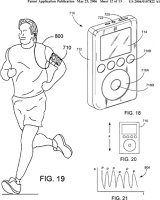 As World Cup soccer rages in Germany this month, 350 teams from around the world will convene in the city of Bremen to compete in the robotic equivalent, the 10th annual RoboCup World Championship. The goal, so to speak, of this event is highly ambitious: to create android athletes that could whip the human world-champion soccer team by the year 2050—and, along the way, advance the field of artificial intelligence.
As World Cup soccer rages in Germany this month, 350 teams from around the world will convene in the city of Bremen to compete in the robotic equivalent, the 10th annual RoboCup World Championship. The goal, so to speak, of this event is highly ambitious: to create android athletes that could whip the human world-champion soccer team by the year 2050—and, along the way, advance the field of artificial intelligence.
David Beckham need not worry anytime soon. The players, which range from Sony Aibo dogs to dwarf-size bipedal ’bots, tend to topple easily, botch passes, and quit when their batteries run low. Still, by robot standards, they’ve got game: The humanoids can play a 20-minute match, replete with holding penalties and goal thrashing, and teams of networked ‘bots can score without any human interference. Give them 44 more years of practice, and they might well be signing autographs, not to mention million- dollar contracts. Check out video.
popsi.com- Read more











